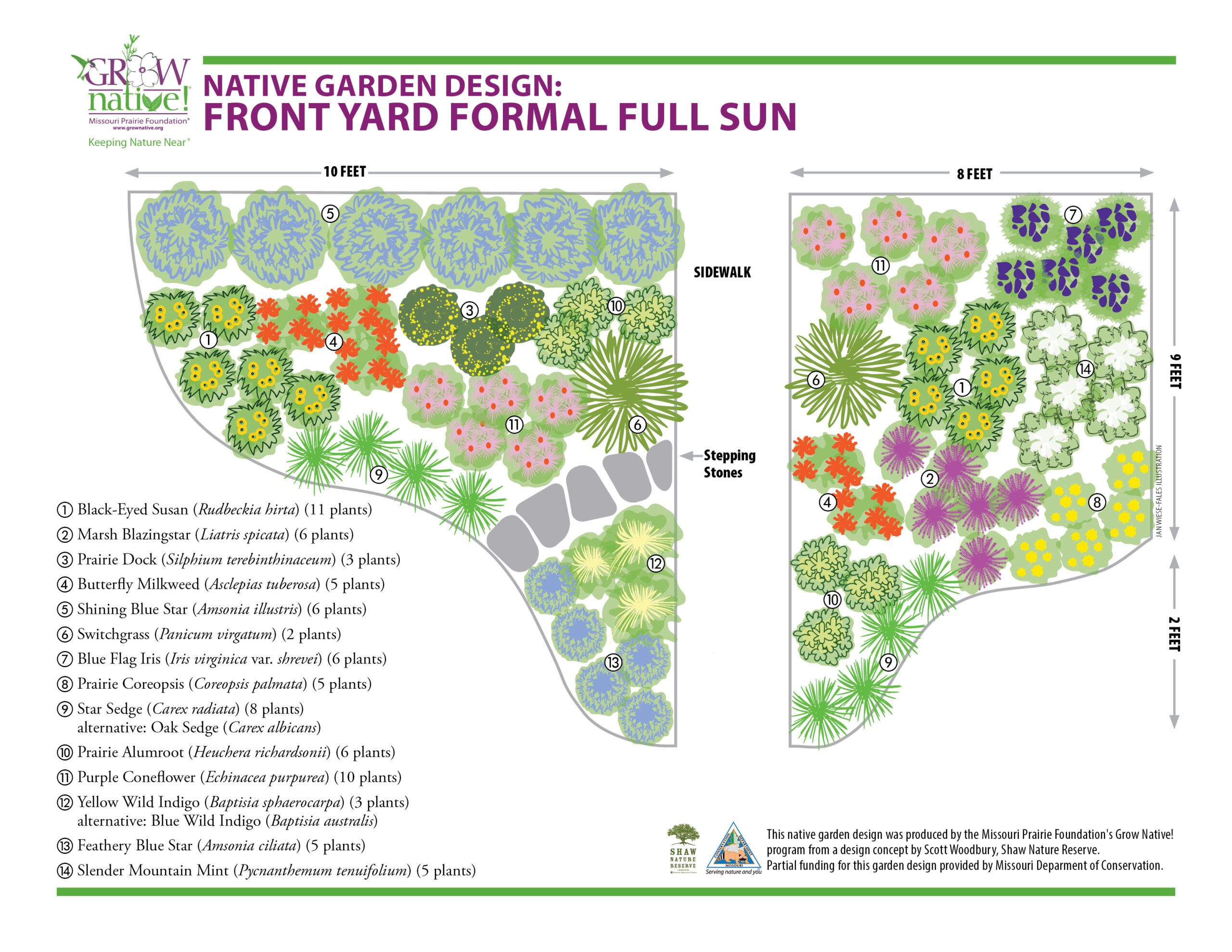Table Of Content

And yet its garden design ideas can translate—and bring magic—to yards of any size. “Old school” is how Michael Farndale described the look of his nondescript front yard in Bothell, Wash., before he began transforming it. “It was the typical grass yard from the sidewalk to the house, with a few scattered shrubs and English ivy taking over. My desire was a lawn-free landscape that would require no mowing, watering or fertilizing and would be inviting to wildlife,” says Farndale. I feel like this is kind of a no-brainer—unless you have zero space or complete shade. When I give my raised bed gardening talks, some gardeners lament that their backyard is full of shade.
Planting
Native plants typically require less water and fewer pesticides than their non-native counterparts. They're generally better adapted to the local climate and soil conditions, which means they're more resistant to disease and drought. This often results in lower maintenance needs and cost savings in terms of water usage and gardening supplies. Lawns take the most resources, work, and equipment of any aspect of landscaping. To conserve natural resources and human energy, consider alternatives to lawns, especially in regions with inadequate rainfall. One idea for how to landscape front yards is to use mulch or ground covers for islands around trees and shrubs if your property is too large for constant mowing and watering.
What is the best soil for native plants?
Without host plants to feed their caterpillars, butterflies can’t complete their lifecycle and their populations suffer. Any species of milkweed, which is the sole host plant for the iconic Monarch butterfly. Climate extremes, whether it's a scorching drought or a frigid cold snap, can stress your native garden. Pests can be particularly troublesome in any garden setting. The key to managing pests in a native plant landscape is to foster a balanced ecosystem. Native plants, such as the slender mountain mint, are known for their pest-repellent properties.
Creating a Sustainable Foundation for Drought-Resistant Plants
In addition, a good portion of the rain runoff from the roof is designed to drain into the center of the garden and percolate into the ground. To design a xeriscape that’s both functional and attractive, start by assessing your space and determining the sun and water zones. Then, select a variety of plants that offer different textures, heights, and colors to create visual interest. Incorporate hardscaping elements like rocks or paths to add structure and reduce water use. Finally, arrange plants in groupings for a cohesive look that’s also water-efficient.
Embrace native plant landscaping
Bare soil will welcome solitary, usually ephemeral and shy, ground-nesting bees. While native gardens attract wildlife, sometimes they can attract a little too much attention. To mitigate these challenges, choose plants that are beautiful to us but less appealing as a food source to animals. Embracing native plant landscape design is a rewarding endeavor, but it's not without its challenges.
Genius Garden Design Ideas from an Iconic American Landscape
It’s great to see homeowners get clever with a small space. I’ve seen veggie gardens on driveways and pots artfully arranged on a diminutive front lawn. In my research, I came across these fabulous driveways planted with low-growing groundcover. A crevice garden can be made of stone, recycled concrete, or other recycled materials. It can use big lumpy rocks or slab-like thinner stones- any kind, truly.
Download a Free Native-Plant Garden Plan for Your Specific Region - Treehugger
Download a Free Native-Plant Garden Plan for Your Specific Region.
Posted: Thu, 09 Feb 2023 08:00:00 GMT [source]
Check regularly that your steps are safe and not slick in snow or rain. Try to create at least one entrance without steps into your house for wheelchair visitors or possible future or emergency use. Or make conditional plans for a ramp, avoiding any plantings that would interfere. Be sure they are hardy, are of the appropriate ultimate size, and have a tidy, season-long appearance.

Trees should be watered deeply as needed even after three years to promote growth, shade and habitat. Phasing of the plantings may be by section but because trees take time to mature, plant the trees first. Planting densely helps to retain moisture and deters weeds.
Design Ideas Inspired by Colorado Landscapes

With a little bit of planning, you can have a garden that’s not only eco-friendly but also a feast for the eyes no matter the season. Excessive rainfalls and periods of drought seem to be the norm. This is especially relevant if you have perpetual wet and soggy spots after a big rain.
Having spaces in a garden divided by walls or hedges—so you catch only a glimpse into one from another through an opening—urges you on with a sense of surprise. Many Australian natives have the most stunning and colourful flowers. As most Australian natives prefer slightly acid soil, you may need to make some amendments to your soil in order to accommodate this. Just remember your purpose is to contribute to an ecosystem that is supporting your local food web. Try to balance aesthetics with ecosystem services, and try not to fight with mother nature.
The best xeriscaping plants for Colorado’s climate are those that are native to the region and have adapted to its dry conditions. Some of the top choices include Blue Grama Grass, Rocky Mountain Penstemon, and Ponderosa Pine. These plants are hardy, require minimal water once established, and offer a natural aesthetic that complements Colorado’s landscapes. Before you plant a single seed or lay a stone, let’s talk dirt—literally. Soil is the foundation of any garden, and in xeriscaping, it’s especially important to get it right. We’re aiming for soil that drains well but can still hold onto enough moisture to keep plants happy during those hot, dry spells.
The ecological advantages of native plant landscape design are substantial. Native plants are pivotal in preserving local genetic diversity and offering support for wildlife. They provide the necessary habitat for numerous pollinators, birds, and insects, which have adapted to coexist with these specific plants. These relationships are crucial for the pollination of crops and the health of local ecosystems. By using these native plant landscape design principles, you can create a garden that is not only a personal refuge but also a vital part of the local ecosystem. Utilize native plant garden ideas to establish a unique and engaging landscape that invites both admiration and nature's diversity.
We have two nice large live oak trees in this landscaped area contained by a rock border. Surrounding them were a hodgepodge of plants that I can now identify as nandina, asparagus fern, yellow lantana, vitex (I think!), turks cap, and bird of paradise. Consider what size the plant will be when it reaches mature growth. Small plants next to larger features (such as walls of the house), and vice versa, will not be in scale. You can design with complementary colors, analogous colors, or monochromatic color schemes.


No comments:
Post a Comment